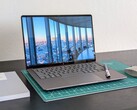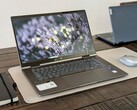
HP Pavilion 16 review: Budget AMD CPU in a stylish laptop
Overall a complete package.
HP’s Pavilion 16 is designed to appeal to both office users and multimedia enthusiasts. To achieve this, the manufacturer pairs an energy-efficient AMD processor with a sleek, stylish chassis. Read on to discover what else this 16-inch laptop has to offer in our review.Florian Glaser, 👁 Florian Glaser, ✓ Sebastian Jankowski (translated by DeepL / Ninh Duy) Published 🇩🇪 🇫🇷 ...
Verdict
In the sub-€1,000 price range, numerous all-round laptops compete for buyers' attention. With the Pavilion 16, HP aims to attract potential customers with a sleek and stylish design. The well-crafted chassis looks great in any setting and proves to be surprisingly sturdy, thanks in part to its metal construction. However, there’s room for improvement when it comes to connectivity—there’s no card reader, for instance. On the plus side, the ports are positioned towards the rear of the side panels, preventing plugged-in devices from getting in the way. The keyboard and touchpad are generally very good; apart from minor issues, such as occasional key rattling, they provide comfortable and reliable input, suitable even for heavy users.
The Pavilion 16 also has plenty to offer under the hood—aside from the soldered RAM and the lack of a second M.2 slot. The Ryzen 5 8540U delivers impressive performance for its power consumption (more on that later) and features the Radeon 740M iGPU. While it falls well short of the 760M or 780M, it’s still capable of handling less demanding or older games. Thanks to its efficient CPU, the Pavilion 16 boasts excellent battery life, lasting over 11 hours in our Wi-Fi browsing test. However, HP could certainly improve the display. Although the IPS panel offers decent contrast, its limited color gamut means visuals aren’t quite as crisp as on some competing laptops.
Pros
Cons
Price and availability
In Germany, the HP Pavilion 16-ag0057ng was available from around 730 euros at the time of testing.
For comparison, we selected the Lenovo Yoga Slim 6 14 ,which features the previous-generation CPU Ryzen 5 7540U alongside Intel-based alternatives: Lenovo IdeaPad Slim 5 16 (Core 7 150U), Yoga 7 2-in-1 16 (Core Ultra 5 125U) and ThinkPad E16 G1 (Core i5-1335U). Each of these models also features a different integrated GPU.
Possible competitors in comparison
Image | Model / Review | Price | Weight | Height | Display |
|---|---|---|---|---|---|
| HP Pavilion 16-ag0057ng AMD Ryzen 5 8540U ⎘ AMD Radeon 740M ⎘ 16 GB Memory, 1024 GB SSD | Amazon: 1. $89.99 GD03XL N66215-005 Replacemen... 2. $24.95 mCover Case ONLY Compatible ... 3. $769.00 HP Pavilion Plus 16 inch Lap... List Price: 730 EUR | 1.7 kg | 18.6 mm | 16.00" 1920x1200 142 PPI IPS | |
| Lenovo Yoga Slim 6 14APU8 AMD Ryzen 5 7540U ⎘ AMD Radeon 740M ⎘ 16 GB Memory, 1024 GB SSD | Amazon: List Price: 800 EUR | 1.4 kg | 15 mm | 14.00" 1920x1200 162 PPI OLED | |
| Lenovo Yoga 7 2-in-1 16IML9 Intel Core Ultra 5 125U ⎘ Intel Graphics 4-Core iGPU (Arrow Lake) ⎘ 16 GB Memory, 512 GB SSD | Amazon: $600.00 List Price: 900 USD | 2.1 kg | 16.99 mm | 16.00" 1920x1200 142 PPI IPS | |
| Lenovo ThinkPad E16 G1 Core i5-1335U Intel Core i5-1335U ⎘ Intel Iris Xe Graphics G7 80EUs ⎘ 16 GB Memory | Amazon: $1,499.99 List Price: 780 USD | 1.8 kg | 19.85 mm | 16.00" 1920x1200 142 PPI IPS | |
| Lenovo IdeaPad Slim 5 16IRU9 Intel Core 7 150U ⎘ Intel Iris Xe Graphics G7 96EUs ⎘ 16 GB Memory | Amazon: 1. $699.99 Lenovo IdeaPad Slim 5 16IRU9... 2. $869.00 Lenovo IdeaPad Slim 5 16IRU9... 3. $599.90 Lenovo IdeaPad Slim 5 Laptop... List Price: 800 USD | 1.8 kg | 16.9 mm | 16.00" 1920x1200 142 PPI IPS |
The Pavilion 16 model we tested goes by the name ag0057ng and houses the aforementioned Ryzen 5 8540U as well as 16 GB LPDDR5 6,400 RAM and a 1 TB NVMe SSD. The screen has a 16:10 format and a resolution of 1,920 x 1,200 pixels. HP pre-installs Windows 11 Home as the operating system.
Specifications
Case
As mentioned at the beginning, the chassis is very stable. Even with stronger pressure, most areas hardly give way. As the lid and the top of the base unit are made of metal, the 16-inch model generally feels very high-quality, which is not a given in this price segment. Thanks to the light coloring, the surfaces hardly attract fingerprints. However, the hinges are adjusted so that the lid can be opened with one hand, but a certain amount of swinging of the base unit cannot be avoided. The maximum opening angle of 130° is rather modest.
With a weight of around 1.7 kg, the Pavilion 16 is the lightest 16-inch tablet in the test field. The competition weighs between 1.8 and 2.1 kg. With a height of just under 1.9 cm, it only achieves a mid-table position.
Equipment
Ports
HP has equipped the all-rounder with an audio jack and a USB-A 3.0 port on the left-hand side, while the right-hand side features a USB-A 3.1 Gen 2 port and two USB-C 3.1 Gen 2 ports including DisplayPort 1.4. The package is rounded off by an HDMI 2.1 output.
Communication
The built-in Wi-Fi 6 chip from Realtek (RTL8852BE) only achieves mediocre results, although this also applies to some competitor devices (see table).
Webcam
The image quality of the webcam (2 MP) is slightly above the (poor) notebook standard, although you shouldn't expect miracles in terms of sharpness and color fidelity here either. Top: HP installs a physical shutter.
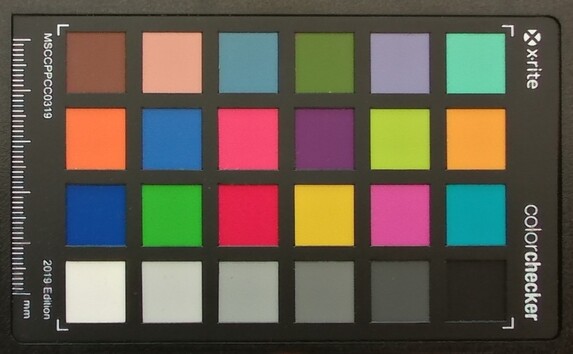
Accessories
The notebook comes with a fairly compact 65-watt power supply unit, which weighs just over 300 grams including the power cable.
Maintenance
Maintenance requires both strength and dexterity. Even after loosening the four small Phillips screws, the base plate is extremely tight. Inside, the picture is relatively unspectacular, with the exception that a secondary fan slot is available but not occupied (presumably intended for more powerful configurations). Unfortunately, the RAM cannot be expanded or replaced, and the mass storage could be replaced if necessary.
Sustainability
HP has put more thought into the issue of sustainability. All packaging materials are made of paper or cardboard, which is still rarely seen at the moment.
Warranty
The warranty is only valid for 24 months.
Input devices
Keyboard
The keyboard performs well in most areas. For a notebook (or any rubber dome-based keyboard, for that matter), it offers surprisingly crisp feedback, though it naturally can’t match a mechanical keyboard. Nevertheless, most buyers will be satisfied with the typing feel. It should be noted that typing sometimes results in a rattling noise from the casing, which can be a little annoying.
The layout is also suboptimal. For example, the power button is not located at the corner but is lost between the press and delete buttons (further deviations from the German standard can be seen in the photo). On the other hand, the 16-inch device boasts a fully-fledged numeric keypad.
Touchpad
The touchpad is also relatively unspectacular in a positive sense. Precision, gliding properties, and gesture support are good, but not outstanding. The dimensions of 12.5 x 8 cm are more than appropriate for a 16-inch device. Left and right clicks in the lower area are reliably accepted, although the casing sometimes tends to rattle.
Display
The picture quality leaves mixed feelings. The good black value of 0.2 cd/m² - at least from an IPS perspective - should be emphasized positively, which leads to a solid contrast of just under 1,600:1.
| |||||||||||||||||||||||||
Brightness Distribution: 88 %
Center on Battery: 324 cd/m²
Contrast: 1620:1 (Black: 0.2 cd/m²)
ΔE ColorChecker Calman: 5.13 | ∀{0.5-29.43 Ø4.78}
calibrated: 2.99
ΔE Greyscale Calman: 4.24 | ∀{0.09-98 Ø5}
43% AdobeRGB 1998 (Argyll 3D)
62.4% sRGB (Argyll 3D)
41.6% Display P3 (Argyll 3D)
Gamma: 2.3
CCT: 7318 K
| HP Pavilion 16-ag0057ng CMN1640, IPS, 1920x1200, 16", 60 Hz | Lenovo Yoga Slim 6 14APU8 Lenovo LEN140WUXGA (LEN88AC), OLED, 1920x1200, 14", 60 Hz | Lenovo Yoga 7 2-in-1 16IML9 LEN160FHD, IPS, 1920x1200, 16", 60 Hz | Lenovo ThinkPad E16 G1 Core i5-1335U R160NW41 R2, IPS, 1920x1200, 16", 60 Hz | Lenovo IdeaPad Slim 5 16IRU9 LEN160WUXGA, IPS, 1920x1200, 16", 60 Hz | |
|---|---|---|---|---|---|
| Display | 109% | -2% | 1% | -1% | |
| Display P3 Coverage (%) | 41.6 | 99.9 140% | 40.9 -2% | 42 1% | 41.5 0% |
| sRGB Coverage (%) | 62.4 | 100 60% | 61.4 -2% | 62.6 0% | 61.2 -2% |
| AdobeRGB 1998 Coverage (%) | 43 | 97 126% | 42.3 -2% | 43.3 1% | 42.9 0% |
| Response Times | 95% | -5% | -42% | 30% | |
| Response Time Grey 50% / Grey 80% * (ms) | 30.7 ? | 1.4 ? 95% | 32.1 ? -5% | 46.4 ? -51% | 20.7 ? 33% |
| Response Time Black / White * (ms) | 20.8 ? | 1.2 ? 94% | 21.8 ? -5% | 27.6 ? -33% | 15.1 ? 27% |
| PWM Frequency (Hz) | 480 ? | ||||
| Screen | 167% | -9% | 1% | -31% | |
| Brightness middle (cd/m²) | 324 | 391 21% | 313.3 -3% | 318.6 -2% | 313.3 -3% |
| Brightness (cd/m²) | 295 | 386 31% | 294 0% | 302 2% | 308 4% |
| Brightness Distribution (%) | 88 | 95 8% | 82 -7% | 91 3% | 91 3% |
| Black Level * (cd/m²) | 0.2 | 0.02 90% | 0.35 -75% | 0.29 -45% | 0.37 -85% |
| Contrast (:1) | 1620 | 19550 1107% | 895 -45% | 1099 -32% | 847 -48% |
| Colorchecker dE 2000 * | 5.13 | 1.89 63% | 4.41 14% | 3.73 27% | 8.42 -64% |
| Colorchecker dE 2000 max. * | 16.11 | 4.43 73% | 15.75 2% | 16.51 -2% | 19.09 -18% |
| Colorchecker dE 2000 calibrated * | 2.99 | 1.79 40% | 1.84 38% | 2.03 32% | 2.16 28% |
| Greyscale dE 2000 * | 4.24 | 1.3 69% | 4.4 -4% | 3.2 25% | 8.3 -96% |
| Gamma | 2.3 96% | 2.204 100% | 2.3 96% | 2.28 96% | 2.83 78% |
| CCT | 7318 89% | 6411 101% | 7395 88% | 6780 96% | 6296 103% |
| Total Average (Program / Settings) | 124% /
144% | -5% /
-7% | -13% /
-5% | -1% /
-16% |
* ... smaller is better
On the other hand, the Pavilion 16 lacks a rich color space: Around 62% sRGB is somewhat modest, even though many competitors are at a similar level. The OLED screen of the Yoga Slim 6, for example, shows how it can be significantly better, but it has to struggle with strong reflections, which does not apply to the HP device thanks to its matt surface.
However, the Pavilion 16 is only suitable for outdoor use to a limited extent, as the brightness of approx. 295 cd/m² is not the best. The color accuracy is also not quite ideal; the display has a slight blue cast in the delivery state (our calibrated ICC file is linked to the right of the illumination graphic).
Display Response Times
| ↔ Response Time Black to White | ||
|---|---|---|
| 20.8 ms ... rise ↗ and fall ↘ combined | ↗ 11.8 ms rise | |
| ↘ 9 ms fall | ||
| The screen shows good response rates in our tests, but may be too slow for competitive gamers. In comparison, all tested devices range from 0.1 (minimum) to 240 (maximum) ms. » 45 % of all devices are better. This means that the measured response time is similar to the average of all tested devices (20.2 ms). | ||
| ↔ Response Time 50% Grey to 80% Grey | ||
| 30.7 ms ... rise ↗ and fall ↘ combined | ↗ 14.8 ms rise | |
| ↘ 15.9 ms fall | ||
| The screen shows slow response rates in our tests and will be unsatisfactory for gamers. In comparison, all tested devices range from 0.165 (minimum) to 636 (maximum) ms. » 40 % of all devices are better. This means that the measured response time is similar to the average of all tested devices (31.6 ms). | ||
Screen Flickering / PWM (Pulse-Width Modulation)
| Screen flickering / PWM not detected | |||
In comparison: 53 % of all tested devices do not use PWM to dim the display. If PWM was detected, an average of 8108 (minimum: 5 - maximum: 343500) Hz was measured. | |||
Performance
In the current configuration, the Pavilion 16 belongs to the entry-level range (iGPU) and tends towards the mid-range (CPU). 16 GB of RAM should be enough for most users for a while, and 1 TB of SSD capacity is also typical in this price range. The existing (and already occupied) M.2 slot can be fitted with full 2280 models.
Test conditions
| myHP Mode | Balanced | Performance |
| Cyberpunk 2077 Noise | 33 dB(A) | 37 dB(A) |
| Cyberpunk 2077 Performance (FHD/Ultra) | 9.8 FPS | 10.6 FPS |
| Cinebench R15 Multi Score | 1226 Points | 1425 Points |
| CPU PL1 | 25 W | 30 W |
| CPU PL2 | 30 W | 30 W |
Processor
The Ryzen 5 8540U is a six-core processor based on the Zen 4 architecture (4 nm), which can process up to 12 threads simultaneously via SMT. In power mode, HP allows the 8540U up to 30 watts PL1 and PL2, which guarantees more than solid performance. Although the old 7540U is not really left behind, the AMD chip can hold its own against the Intel competition in the form of the Core Ultra 5 125U or Core i5-1335U, for example.
Cinebench R15 Multi loop
* ... smaller is better
AIDA64: FP32 Ray-Trace | FPU Julia | CPU SHA3 | CPU Queen | FPU SinJulia | FPU Mandel | CPU AES | CPU ZLib | FP64 Ray-Trace | CPU PhotoWorxx
| Performance rating | |
| Average of class Multimedia | |
| HP Pavilion 16-ag0057ng | |
| Average AMD Ryzen 5 8540U | |
| Lenovo Yoga Slim 6 14APU8 | |
| Lenovo Yoga 7 2-in-1 16IML9 | |
| Lenovo IdeaPad Slim 5 16IRU9 | |
| Lenovo ThinkPad E16 G1 Core i5-1335U | |
| AIDA64 / FP32 Ray-Trace | |
| Average of class Multimedia (2214 - 50388, n=58, last 2 years) | |
| HP Pavilion 16-ag0057ng | |
| Average AMD Ryzen 5 8540U (15717 - 16031, n=2) | |
| Lenovo Yoga Slim 6 14APU8 | |
| Lenovo Yoga 7 2-in-1 16IML9 | |
| Lenovo IdeaPad Slim 5 16IRU9 | |
| Lenovo ThinkPad E16 G1 Core i5-1335U | |
| AIDA64 / FPU Julia | |
| Average of class Multimedia (12867 - 201874, n=59, last 2 years) | |
| HP Pavilion 16-ag0057ng | |
| Average AMD Ryzen 5 8540U (66511 - 68587, n=2) | |
| Lenovo Yoga Slim 6 14APU8 | |
| Lenovo Yoga 7 2-in-1 16IML9 | |
| Lenovo ThinkPad E16 G1 Core i5-1335U | |
| Lenovo IdeaPad Slim 5 16IRU9 | |
| AIDA64 / CPU SHA3 | |
| Average of class Multimedia (653 - 8623, n=59, last 2 years) | |
| HP Pavilion 16-ag0057ng | |
| Average AMD Ryzen 5 8540U (2810 - 2866, n=2) | |
| Lenovo Yoga Slim 6 14APU8 | |
| Lenovo Yoga 7 2-in-1 16IML9 | |
| Lenovo ThinkPad E16 G1 Core i5-1335U | |
| Lenovo IdeaPad Slim 5 16IRU9 | |
| AIDA64 / CPU Queen | |
| Average of class Multimedia (13483 - 181505, n=59, last 2 years) | |
| Lenovo Yoga Slim 6 14APU8 | |
| Lenovo IdeaPad Slim 5 16IRU9 | |
| Average AMD Ryzen 5 8540U (64557 - 64867, n=2) | |
| HP Pavilion 16-ag0057ng | |
| Lenovo ThinkPad E16 G1 Core i5-1335U | |
| Lenovo Yoga 7 2-in-1 16IML9 | |
| AIDA64 / FPU SinJulia | |
| Average of class Multimedia (1240 - 28794, n=59, last 2 years) | |
| HP Pavilion 16-ag0057ng | |
| Average AMD Ryzen 5 8540U (8891 - 8981, n=2) | |
| Lenovo Yoga Slim 6 14APU8 | |
| Lenovo Yoga 7 2-in-1 16IML9 | |
| Lenovo IdeaPad Slim 5 16IRU9 | |
| Lenovo ThinkPad E16 G1 Core i5-1335U | |
| AIDA64 / FPU Mandel | |
| Average of class Multimedia (6395 - 105740, n=58, last 2 years) | |
| HP Pavilion 16-ag0057ng | |
| Average AMD Ryzen 5 8540U (35558 - 36926, n=2) | |
| Lenovo Yoga Slim 6 14APU8 | |
| Lenovo Yoga 7 2-in-1 16IML9 | |
| Lenovo ThinkPad E16 G1 Core i5-1335U | |
| Lenovo IdeaPad Slim 5 16IRU9 | |
| AIDA64 / CPU AES | |
| Average of class Multimedia (13243 - 169946, n=59, last 2 years) | |
| HP Pavilion 16-ag0057ng | |
| Average AMD Ryzen 5 8540U (49688 - 51450, n=2) | |
| Lenovo Yoga 7 2-in-1 16IML9 | |
| Lenovo ThinkPad E16 G1 Core i5-1335U | |
| Lenovo IdeaPad Slim 5 16IRU9 | |
| Lenovo Yoga Slim 6 14APU8 | |
| AIDA64 / CPU ZLib | |
| Average of class Multimedia (167.2 - 2022, n=59, last 2 years) | |
| Lenovo Yoga 7 2-in-1 16IML9 | |
| Lenovo ThinkPad E16 G1 Core i5-1335U | |
| Lenovo Yoga Slim 6 14APU8 | |
| HP Pavilion 16-ag0057ng | |
| Lenovo IdeaPad Slim 5 16IRU9 | |
| Average AMD Ryzen 5 8540U (641 - 651, n=2) | |
| AIDA64 / FP64 Ray-Trace | |
| Average of class Multimedia (1014 - 26875, n=59, last 2 years) | |
| HP Pavilion 16-ag0057ng | |
| Average AMD Ryzen 5 8540U (8357 - 8506, n=2) | |
| Lenovo Yoga Slim 6 14APU8 | |
| Lenovo Yoga 7 2-in-1 16IML9 | |
| Lenovo IdeaPad Slim 5 16IRU9 | |
| Lenovo ThinkPad E16 G1 Core i5-1335U | |
| AIDA64 / CPU PhotoWorxx | |
| Lenovo Yoga 7 2-in-1 16IML9 | |
| Average of class Multimedia (12860 - 65787, n=59, last 2 years) | |
| Lenovo IdeaPad Slim 5 16IRU9 | |
| Lenovo Yoga Slim 6 14APU8 | |
| HP Pavilion 16-ag0057ng | |
| Average AMD Ryzen 5 8540U (23092 - 34005, n=2) | |
| Lenovo ThinkPad E16 G1 Core i5-1335U | |
System performance
The system performance does not have to hide behind the comparison devices either, be it in PCMark 10 or in other benchmarks. The operating system reacts pleasantly quickly in everyday use, apart from the loading times of modern games (keyword: compiling shaders).
CrossMark: Overall | Productivity | Creativity | Responsiveness
WebXPRT 3: Overall
WebXPRT 4: Overall
Mozilla Kraken 1.1: Total
| PCMark 10 / Score | |
| Average of class Multimedia (4325 - 10386, n=55, last 2 years) | |
| Lenovo IdeaPad Slim 5 16IRU9 | |
| Lenovo Yoga Slim 6 14APU8 | |
| HP Pavilion 16-ag0057ng | |
| Lenovo Yoga 7 2-in-1 16IML9 | |
| Average AMD Ryzen 5 8540U, AMD Radeon 740M (5791 - 5898, n=2) | |
| Lenovo ThinkPad E16 G1 Core i5-1335U | |
| PCMark 10 / Essentials | |
| Lenovo IdeaPad Slim 5 16IRU9 | |
| Lenovo Yoga 7 2-in-1 16IML9 | |
| Average of class Multimedia (8025 - 12420, n=55, last 2 years) | |
| Lenovo ThinkPad E16 G1 Core i5-1335U | |
| HP Pavilion 16-ag0057ng | |
| Average AMD Ryzen 5 8540U, AMD Radeon 740M (9526 - 9827, n=2) | |
| Lenovo Yoga Slim 6 14APU8 | |
| PCMark 10 / Productivity | |
| Average of class Multimedia (7323 - 16647, n=55, last 2 years) | |
| Lenovo Yoga Slim 6 14APU8 | |
| Average AMD Ryzen 5 8540U, AMD Radeon 740M (8789 - 9076, n=2) | |
| HP Pavilion 16-ag0057ng | |
| Lenovo IdeaPad Slim 5 16IRU9 | |
| Lenovo Yoga 7 2-in-1 16IML9 | |
| Lenovo ThinkPad E16 G1 Core i5-1335U | |
| PCMark 10 / Digital Content Creation | |
| Average of class Multimedia (3651 - 16240, n=55, last 2 years) | |
| Lenovo IdeaPad Slim 5 16IRU9 | |
| Lenovo Yoga 7 2-in-1 16IML9 | |
| Lenovo Yoga Slim 6 14APU8 | |
| HP Pavilion 16-ag0057ng | |
| Average AMD Ryzen 5 8540U, AMD Radeon 740M (6095 - 6445, n=2) | |
| Lenovo ThinkPad E16 G1 Core i5-1335U | |
| CrossMark / Overall | |
| Average of class Multimedia (866 - 2426, n=63, last 2 years) | |
| Lenovo IdeaPad Slim 5 16IRU9 | |
| Lenovo Yoga 7 2-in-1 16IML9 | |
| Average AMD Ryzen 5 8540U, AMD Radeon 740M (n=1) | |
| Lenovo ThinkPad E16 G1 Core i5-1335U | |
| CrossMark / Productivity | |
| Average of class Multimedia (913 - 2344, n=63, last 2 years) | |
| Lenovo IdeaPad Slim 5 16IRU9 | |
| Average AMD Ryzen 5 8540U, AMD Radeon 740M (n=1) | |
| Lenovo ThinkPad E16 G1 Core i5-1335U | |
| Lenovo Yoga 7 2-in-1 16IML9 | |
| CrossMark / Creativity | |
| Average of class Multimedia (907 - 2820, n=63, last 2 years) | |
| Lenovo IdeaPad Slim 5 16IRU9 | |
| Lenovo Yoga 7 2-in-1 16IML9 | |
| Lenovo ThinkPad E16 G1 Core i5-1335U | |
| Average AMD Ryzen 5 8540U, AMD Radeon 740M (n=1) | |
| CrossMark / Responsiveness | |
| Lenovo IdeaPad Slim 5 16IRU9 | |
| Average of class Multimedia (605 - 2094, n=63, last 2 years) | |
| Average AMD Ryzen 5 8540U, AMD Radeon 740M (n=1) | |
| Lenovo ThinkPad E16 G1 Core i5-1335U | |
| Lenovo Yoga 7 2-in-1 16IML9 | |
| WebXPRT 3 / Overall | |
| Average of class Multimedia (136.4 - 545, n=66, last 2 years) | |
| Lenovo IdeaPad Slim 5 16IRU9 | |
| Lenovo Yoga Slim 6 14APU8 | |
| HP Pavilion 16-ag0057ng | |
| HP Pavilion 16-ag0057ng | |
| Average AMD Ryzen 5 8540U, AMD Radeon 740M (285 - 285, n=2) | |
| Lenovo Yoga 7 2-in-1 16IML9 | |
| WebXPRT 4 / Overall | |
| Average of class Multimedia (167.3 - 384, n=65, last 2 years) | |
| Lenovo IdeaPad Slim 5 16IRU9 | |
| Average AMD Ryzen 5 8540U, AMD Radeon 740M (240 - 242, n=3) | |
| HP Pavilion 16-ag0057ng | |
| HP Pavilion 16-ag0057ng | |
| Lenovo Yoga 7 2-in-1 16IML9 | |
| Mozilla Kraken 1.1 / Total | |
| Lenovo ThinkPad E16 G1 Core i5-1335U | |
| Lenovo Yoga 7 2-in-1 16IML9 | |
| Lenovo Yoga Slim 6 14APU8 | |
| HP Pavilion 16-ag0057ng | |
| HP Pavilion 16-ag0057ng | |
| Average AMD Ryzen 5 8540U, AMD Radeon 740M (542 - 553, n=3) | |
| Lenovo IdeaPad Slim 5 16IRU9 | |
| Average of class Multimedia (228 - 835, n=69, last 2 years) | |
* ... smaller is better
| PCMark 10 Score | 5898 points | |
Help | ||
| AIDA64 / Memory Copy | |
| Lenovo Yoga 7 2-in-1 16IML9 | |
| Average of class Multimedia (21158 - 109252, n=59, last 2 years) | |
| HP Pavilion 16-ag0057ng | |
| Lenovo Yoga Slim 6 14APU8 | |
| Lenovo IdeaPad Slim 5 16IRU9 | |
| Average AMD Ryzen 5 8540U (34855 - 70601, n=2) | |
| Lenovo ThinkPad E16 G1 Core i5-1335U | |
| AIDA64 / Memory Read | |
| Average of class Multimedia (19699 - 125604, n=59, last 2 years) | |
| Lenovo Yoga 7 2-in-1 16IML9 | |
| Lenovo IdeaPad Slim 5 16IRU9 | |
| HP Pavilion 16-ag0057ng | |
| Lenovo Yoga Slim 6 14APU8 | |
| Average AMD Ryzen 5 8540U (30502 - 50782, n=2) | |
| Lenovo ThinkPad E16 G1 Core i5-1335U | |
| AIDA64 / Memory Write | |
| Lenovo Yoga Slim 6 14APU8 | |
| HP Pavilion 16-ag0057ng | |
| Lenovo IdeaPad Slim 5 16IRU9 | |
| Average of class Multimedia (17733 - 117933, n=59, last 2 years) | |
| Average AMD Ryzen 5 8540U (42384 - 91931, n=2) | |
| Lenovo Yoga 7 2-in-1 16IML9 | |
| Lenovo ThinkPad E16 G1 Core i5-1335U | |
| AIDA64 / Memory Latency | |
| Lenovo Yoga 7 2-in-1 16IML9 | |
| Average of class Multimedia (7 - 535, n=59, last 2 years) | |
| HP Pavilion 16-ag0057ng | |
| Lenovo Yoga Slim 6 14APU8 | |
| Average AMD Ryzen 5 8540U (106.4 - 117.7, n=2) | |
| Lenovo IdeaPad Slim 5 16IRU9 | |
| Lenovo ThinkPad E16 G1 Core i5-1335U | |
* ... smaller is better
DPC latencies
| DPC Latencies / LatencyMon - interrupt to process latency (max), Web, Youtube, Prime95 | |
| Lenovo IdeaPad Slim 5 16IRU9 | |
| Lenovo Yoga Slim 6 14APU8 | |
| HP Pavilion 16-ag0057ng | |
| Lenovo ThinkPad E16 G1 Core i5-1335U | |
| Lenovo Yoga 7 2-in-1 16IML9 | |
* ... smaller is better
Storage devices
The 1 TB SSD comes from SK hynix (model BC901) and offers good performance thanks to PCIe/NVMe technology. Although there was a brief dip in the DiskSpd loop, the performance is otherwise quite consistent.
* ... smaller is better
Continuous read: DiskSpd Read Loop, Queue Depth 8
GPU performance
The Ryzen 5 8540U's built-in Radeon 740M must be compared to the 760M or 780M has to make do with 256 instead of 512 or 768 shader units, which is clearly noticeable in terms of speed. In the synthetic benchmarks, the 740M of the Pavilion 16 is roughly on a par with the Intel Graphics 4-Core respectively Iris Xe Graphics G7 with 96 EUs (the G7 with 80 EUs is noticeably slower). However, it should be mentioned that the Radeon 740M performs (even) better in other laptops like the Yoga Slim 6.
| 3DMark 06 Standard Score | 29777 points | |
| 3DMark 11 Performance | 7334 points | |
| 3DMark Ice Storm Standard Score | 141378 points | |
| 3DMark Cloud Gate Standard Score | 21552 points | |
| 3DMark Fire Strike Score | 4525 points | |
| 3DMark Time Spy Score | 1802 points | |
Help | ||
Gaming performance
In gaming, the GPU ranking shifts slightly to the detriment of the Pavilion 16. Modern titles such as Black Ops 6 already overtax the Radeon 740M in Full HD resolution if you don't resort to (massive) upscaling - provided a smooth frame rate can be achieved at all. However, older or less demanding titles can be played in solid quality - for example, Dota 2. If you want to play games from time to time, you should still opt for a device with a Radeon 760M/780M or better.
| Cyberpunk 2077 - 1920x1080 Ultra Preset (FSR off) | |
| Average of class Multimedia (6.41 - 112.3, n=71, last 2 years) | |
| Lenovo Yoga 7 2-in-1 16IML9 | |
| Lenovo IdeaPad Slim 5 16IRU9 | |
| HP Pavilion 16-ag0057ng | |
| Lenovo Yoga Slim 6 14APU8 | |
| Average AMD Radeon 740M (9.26 - 10.6, n=3) | |
| Baldur's Gate 3 - 1920x1080 Ultra Preset AA:T | |
| Average of class Multimedia (7.8 - 158.7, n=59, last 2 years) | |
| Lenovo Yoga Slim 6 14APU8 | |
| Average AMD Radeon 740M (10.1 - 13.2, n=4) | |
| HP Pavilion 16-ag0057ng | |
| Lenovo IdeaPad Slim 5 16IRU9 | |
| GTA V - 1920x1080 Highest AA:4xMSAA + FX AF:16x | |
| Average of class Multimedia (9.51 - 141.6, n=59, last 2 years) | |
| Lenovo Yoga Slim 6 14APU8 | |
| Average AMD Radeon 740M (10.2 - 18.5, n=4) | |
| HP Pavilion 16-ag0057ng | |
| Lenovo IdeaPad Slim 5 16IRU9 | |
| Lenovo ThinkPad E16 G1 Core i5-1335U | |
In the long-term test with Cyberpunk 2077 there were no abnormalities, the frame rate remained very stable.
Cyberpunk 2077 ultra FPS chart
| low | med. | high | ultra | |
|---|---|---|---|---|
| GTA V (2015) | 135.8 | 124.4 | 41.4 | 13.1 |
| Dota 2 Reborn (2015) | 120.9 | 100.1 | 63 | 53.7 |
| Final Fantasy XV Benchmark (2018) | 51.4 | 23.1 | 17.4 | |
| X-Plane 11.11 (2018) | 32.6 | 25.7 | 20.3 | |
| Strange Brigade (2018) | 109.7 | 42.6 | 34.5 | 28.1 |
| Baldur's Gate 3 (2023) | 20.2 | 16.4 | 12 | 10.8 |
| Cyberpunk 2077 (2023) | 21.5 | 16.5 | 13.8 | 10.6 |
| EA Sports FC 25 (2024) | 46 | 35.7 | 25.8 | 24.4 |
| Call of Duty Black Ops 6 (2024) | 27 | 23 | 14 | 13 |
| Stalker 2 (2024) | 10.2 | 8.27 | 6.67 | 5.5 |
| Indiana Jones and the Great Circle (2024) | 9.89 |
Emissions
Noise emissions
One of the great strengths of the Pavilion 16 is its moderate noise development. Even in performance mode, the 16-incher reached a maximum of 39 dB(A) in our stress test. In "normal" 3D applications such as games, you can expect around 37 dB(A), which is still quite audible, but not disturbingly loud. For comparison: The balanced mode only produces approx. 33 dB(A) here - a pleasingly low level. In idle mode and during rather simple activities (movies etc.), the system generally remains pleasantly quiet, sometimes the fan is even completely off.
Noise level
| Idle |
| 24 / 25 / 26 dB(A) |
| Load |
| 38 / 39 dB(A) |
 | ||
30 dB silent 40 dB(A) audible 50 dB(A) loud |
||
min: | ||
| HP Pavilion 16-ag0057ng R5 8540U, Radeon 740M | Lenovo Yoga Slim 6 14APU8 R5 7540U, Radeon 740M | Lenovo Yoga 7 2-in-1 16IML9 Ultra 5 125U, Graphics 4-Core iGPU (Arrow Lake) | Lenovo ThinkPad E16 G1 Core i5-1335U i5-1335U, Iris Xe G7 80EUs | Lenovo IdeaPad Slim 5 16IRU9 Core 7 150U, Iris Xe G7 96EUs | |
|---|---|---|---|---|---|
| Noise | -3% | 8% | 2% | -0% | |
| off / environment * (dB) | 24 | 24 -0% | 22.8 5% | 24.6 -3% | 23 4% |
| Idle Minimum * (dB) | 24 | 25 -4% | 22.8 5% | 24.6 -3% | 23 4% |
| Idle Average * (dB) | 25 | 27 -8% | 22.8 9% | 24.6 2% | 23 8% |
| Idle Maximum * (dB) | 26 | 29 -12% | 22.8 12% | 24.6 5% | 23 12% |
| Load Average * (dB) | 38 | 37 3% | 30.8 19% | 32.7 14% | 43.3 -14% |
| Cyberpunk 2077 ultra * (dB) | 37 | 37 -0% | 40.8 -10% | ||
| Load Maximum * (dB) | 39 | 38 3% | 40.8 -5% | 39.2 -1% | 40.9 -5% |
| Witcher 3 ultra * (dB) | 31 | 34.7 |
* ... smaller is better
Temperature
The temperatures are also not exaggerated. Under full load, we were able to elicit a maximum of 42 °C on the top of the chassis and a maximum of 44 °C on the case back, with the average value still at a moderate 37 and 36 °C respectively, and the wrist-rest always remaining in acceptable regions. In idle situations, the entire chassis remains below the 30 °C mark and is correspondingly cool.
(±) The maximum temperature on the upper side is 42 °C / 108 F, compared to the average of 36.9 °C / 98 F, ranging from 21.1 to 71 °C for the class Multimedia.
(±) The bottom heats up to a maximum of 44 °C / 111 F, compared to the average of 39.2 °C / 103 F
(+) In idle usage, the average temperature for the upper side is 25 °C / 77 F, compared to the device average of 31.3 °C / 88 F.
(±) 3: The average temperature for the upper side is 34.7 °C / 94 F, compared to the average of 31.3 °C / 88 F for the class Multimedia.
(+) The palmrests and touchpad are reaching skin temperature as a maximum (32 °C / 89.6 F) and are therefore not hot.
(-) The average temperature of the palmrest area of similar devices was 28.7 °C / 83.7 F (-3.3 °C / -5.9 F).
| HP Pavilion 16-ag0057ng R5 8540U, Radeon 740M | Lenovo Yoga Slim 6 14APU8 R5 7540U, Radeon 740M | Lenovo Yoga 7 2-in-1 16IML9 Ultra 5 125U, Graphics 4-Core iGPU (Arrow Lake) | Lenovo ThinkPad E16 G1 Core i5-1335U i5-1335U, Iris Xe G7 80EUs | Lenovo IdeaPad Slim 5 16IRU9 Core 7 150U, Iris Xe G7 96EUs | |
|---|---|---|---|---|---|
| Heat | -3% | 7% | -6% | 4% | |
| Maximum Upper Side * (°C) | 42 | 39 7% | 37.8 10% | 44 -5% | 35.4 16% |
| Maximum Bottom * (°C) | 44 | 46 -5% | 38.8 12% | 50.4 -15% | 33 25% |
| Idle Upper Side * (°C) | 26 | 28 -8% | 25.4 2% | 27.2 -5% | 30.2 -16% |
| Idle Bottom * (°C) | 28 | 29 -4% | 26.8 4% | 27.8 1% | 30.2 -8% |
* ... smaller is better
Stress test
Speakers
The 2.0 system offers above-average sound quality. Although the bass could be a little stronger, the overall performance is quite respectable by notebook standards.
HP Pavilion 16-ag0057ng audio analysis
(+) | speakers can play relatively loud (84 dB)
Bass 100 - 315 Hz
(±) | reduced bass - on average 13.2% lower than median
(±) | linearity of bass is average (11.2% delta to prev. frequency)
Mids 400 - 2000 Hz
(+) | balanced mids - only 2% away from median
(+) | mids are linear (2.4% delta to prev. frequency)
Highs 2 - 16 kHz
(+) | balanced highs - only 3.2% away from median
(+) | highs are linear (5.8% delta to prev. frequency)
Overall 100 - 16.000 Hz
(+) | overall sound is linear (12% difference to median)
Compared to same class
» 19% of all tested devices in this class were better, 3% similar, 79% worse
» The best had a delta of 5%, average was 17%, worst was 45%
Compared to all devices tested
» 9% of all tested devices were better, 2% similar, 89% worse
» The best had a delta of 4%, average was 24%, worst was 134%
Lenovo Yoga Slim 6 14APU8 audio analysis
(±) | speaker loudness is average but good (81 dB)
Bass 100 - 315 Hz
(-) | nearly no bass - on average 23.4% lower than median
(±) | linearity of bass is average (9.2% delta to prev. frequency)
Mids 400 - 2000 Hz
(+) | balanced mids - only 4.6% away from median
(+) | mids are linear (5.4% delta to prev. frequency)
Highs 2 - 16 kHz
(+) | balanced highs - only 2.3% away from median
(+) | highs are linear (5.7% delta to prev. frequency)
Overall 100 - 16.000 Hz
(±) | linearity of overall sound is average (17.2% difference to median)
Compared to same class
» 43% of all tested devices in this class were better, 9% similar, 48% worse
» The best had a delta of 5%, average was 18%, worst was 53%
Compared to all devices tested
» 31% of all tested devices were better, 8% similar, 61% worse
» The best had a delta of 4%, average was 24%, worst was 134%
Energy management
Power consumption
The Pavilion 16 proves to be the most economical representative in the test field. 4 to 6 watts in idle mode and 40 to 46 watts under load deserve praise. The 65-watt power supply is not even close to being exhausted.
| Off / Standby | |
| Idle | |
| Load |
|
Key:
min: | |
| HP Pavilion 16-ag0057ng R5 8540U, Radeon 740M | Lenovo Yoga Slim 6 14APU8 R5 7540U, Radeon 740M | Lenovo Yoga 7 2-in-1 16IML9 Ultra 5 125U, Graphics 4-Core iGPU (Arrow Lake) | Lenovo ThinkPad E16 G1 Core i5-1335U i5-1335U, Iris Xe G7 80EUs | Lenovo IdeaPad Slim 5 16IRU9 Core 7 150U, Iris Xe G7 96EUs | Average of class Multimedia | |
|---|---|---|---|---|---|---|
| Power Consumption | -23% | -27% | -37% | -23% | -99% | |
| Idle Minimum * (Watt) | 4 | 5 -25% | 3 25% | 4.9 -23% | 3.3 17% | 6 ? -50% |
| Idle Average * (Watt) | 5 | 6 -20% | 8.5 -70% | 8.3 -66% | 7.5 -50% | 10.5 ? -110% |
| Idle Maximum * (Watt) | 6 | 10 -67% | 8.9 -48% | 8.6 -43% | 7.8 -30% | 12.6 ? -110% |
| Load Average * (Watt) | 40 | 41 -3% | 41.1 -3% | 42.9 -7% | 56.9 -42% | 69.3 ? -73% |
| Cyberpunk 2077 ultra external monitor * (Watt) | 39.1 | 41.2 -5% | ||||
| Cyberpunk 2077 ultra * (Watt) | 43 | 42.5 1% | 48.7 -13% | |||
| Load Maximum * (Watt) | 46 | 58 -26% | 64.6 -40% | 67 -46% | 62.4 -36% | 115.2 ? -150% |
| Witcher 3 ultra * (Watt) | 30.7 | 44.9 |
* ... smaller is better
Power consumption Cyberpunk / Stress test
Power consumption with the external monitor
Battery life
Together with the 59-Wh battery, the 16-inch device achieves quite long runtimes. In our web surfing test with the brightness reduced to 150 cd/m², the device lasted more than 11 hours, with two of the competitors achieving slightly better values.
| HP Pavilion 16-ag0057ng R5 8540U, Radeon 740M, 59 Wh | Lenovo Yoga Slim 6 14APU8 R5 7540U, Radeon 740M, 60 Wh | Lenovo Yoga 7 2-in-1 16IML9 Ultra 5 125U, Graphics 4-Core iGPU (Arrow Lake), 71 Wh | Lenovo ThinkPad E16 G1 Core i5-1335U i5-1335U, Iris Xe G7 80EUs, 47 Wh | Lenovo IdeaPad Slim 5 16IRU9 Core 7 150U, Iris Xe G7 96EUs, 57 Wh | Average of class Multimedia | |
|---|---|---|---|---|---|---|
| Battery runtime | -14% | 8% | -54% | 11% | -1% | |
| WiFi v1.3 (h) | 11.4 | 9.8 -14% | 12.3 8% | 5.2 -54% | 12.7 11% | 11.3 ? -1% |
| Reader / Idle (h) | 26.1 | 23.4 ? | ||||
| Load (h) | 1.6 | 1.653 ? |
Notebookcheck overall rating
The HP Pavilion 16-ag0057ng with the efficient Ryzen 5 8540U is a stylish, long-lasting and mostly quiet all-round notebook, although its display could have used a larger color space.
HP Pavilion 16-ag0057ng
- 02/07/2025 v8
Florian Glaser
Transparency
The selection of devices to be reviewed is made by our editorial team. The test sample was provided to the author as a loan by the manufacturer or retailer for the purpose of this review. The lender had no influence on this review, nor did the manufacturer receive a copy of this review before publication. There was no obligation to publish this review. As an independent media company, Notebookcheck is not subjected to the authority of manufacturers, retailers or publishers.
This is how Notebookcheck is testing
Every year, Notebookcheck independently reviews hundreds of laptops and smartphones using standardized procedures to ensure that all results are comparable. We have continuously developed our test methods for around 20 years and set industry standards in the process. In our test labs, high-quality measuring equipment is utilized by experienced technicians and editors. These tests involve a multi-stage validation process. Our complex rating system is based on hundreds of well-founded measurements and benchmarks, which maintains objectivity. Further information on our test methods can be found here.










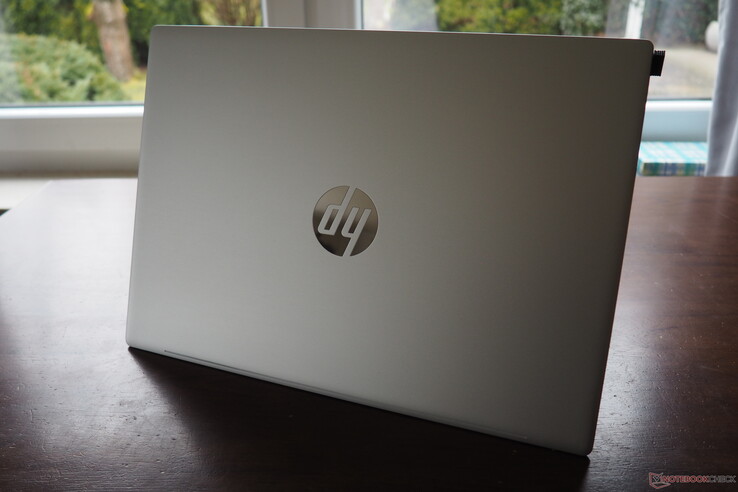







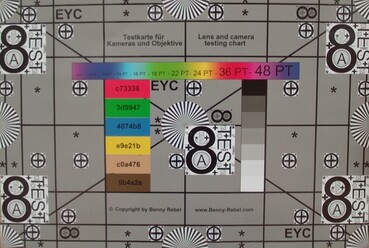

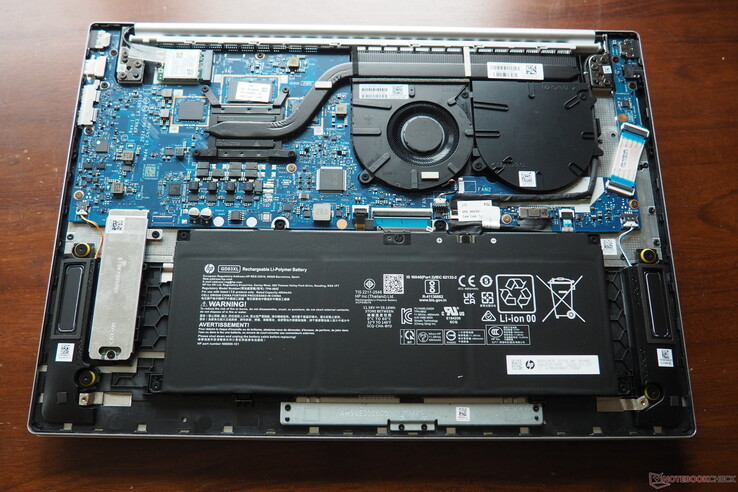





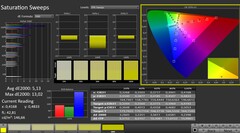
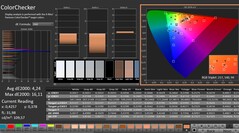
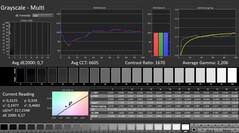

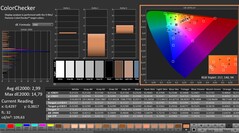
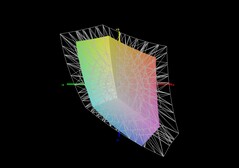

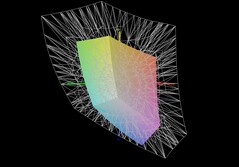
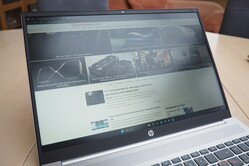
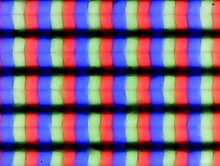
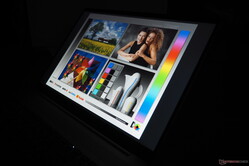
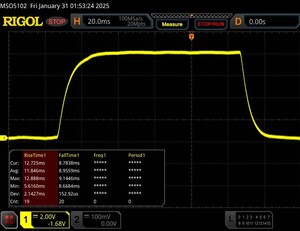
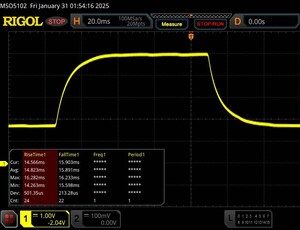
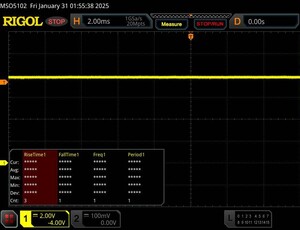

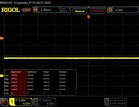
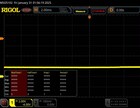

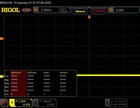
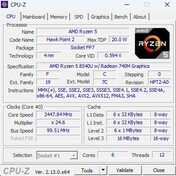
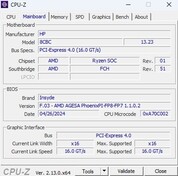



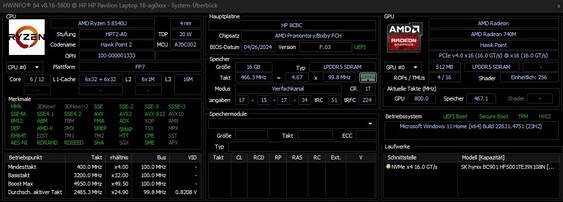
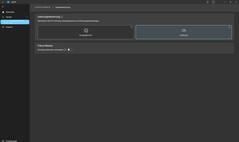
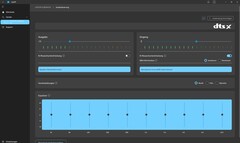

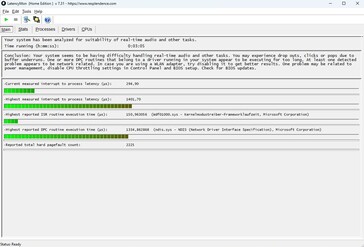
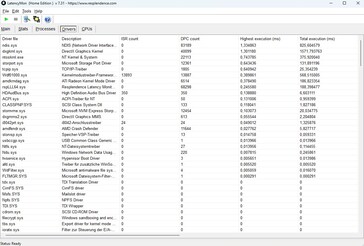

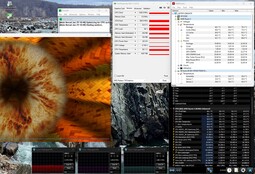

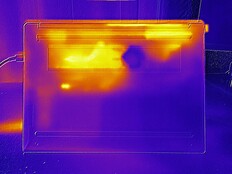
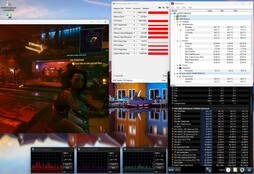
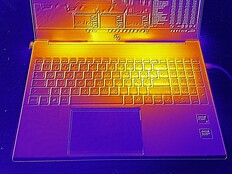
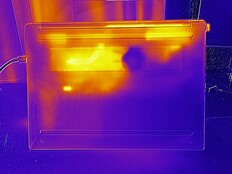
 Total Sustainability Score:
Total Sustainability Score: 